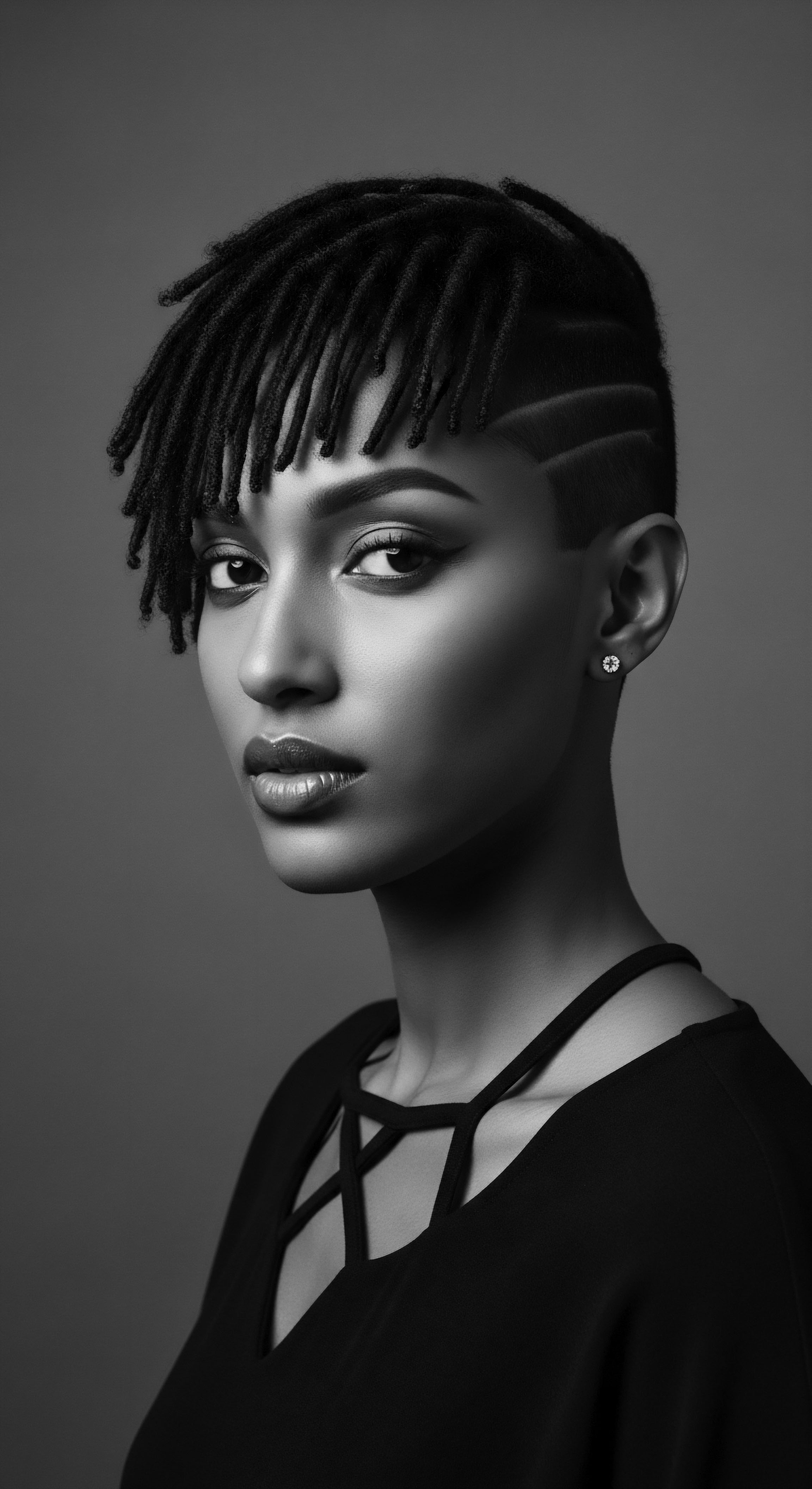
Fundamentals
The journey of hair, especially textured hair, stands as a testament to its deep connection with the world around it. We speak of Environmental Hair as the dynamic interplay between a strand’s physical characteristics and the myriad external conditions that influence its vitality, form, and overall well-being across its lifespan. This concept extends beyond merely climate, encompassing every element that touches, shapes, or influences the hair from its very emergence. It is a dialogue between the hair’s intrinsic nature and its surroundings, a conversation spanning eons of adaptation and generations of care.
Consider for a moment the sun, a generous giver of light and warmth. Its unfiltered rays, particularly in equatorial regions, shaped the very helix of ancestral hair. Early human populations, dwelling under intense solar exposure, developed hair textures that provided natural insulation and defense against ultraviolet radiation. This ancestral legacy manifests today in the coil patterns that define much of Black and mixed-race hair.
The dense, spiraled configuration creates air pockets, allowing for circulation that helps regulate scalp temperature, offering a form of natural climate control (EBSCO Research Starters, 2024). The very structure of Afro-textured hair, with its unique elliptical cross-section and retro curvature at the hair bulb, stands as a biological chronicle of these ancient environmental negotiations.
Humidity, too, plays a significant role in the daily experience of textured hair. Moist air can cause hair to absorb water, leading to expansion and a tendency for curls to tighten or revert, a phenomenon often referred to as “shrinkage.” Conversely, arid conditions can strip hair of its much-needed moisture, leaving it dry and brittle. Understanding these elemental responses is a foundational step in honoring hair’s innate intelligence. It speaks to a profound intelligence within the hair itself, a wisdom honed over millennia, allowing it to respond and adjust to its immediate surroundings.
Environmental Hair refers to the intimate relationship between hair, particularly textured hair, and all external conditions, both natural and societal, that shape its physical state and cultural meaning.
The wind, a constant companion, can be a gentle caress or a harsh assailant. Its persistent movement can lead to tangling and knotting, particularly for longer strands or those with tighter curl patterns, prompting protective styling traditions that span continents. Similarly, airborne particles, like dust and pollutants, can cling to hair fibers, dulling their luster and potentially affecting scalp health (NYSCC, 2021). These elements, though seemingly small, collectively form the initial canvas upon which the story of Environmental Hair begins to unfold.
Beyond the purely physical aspects, the designation of Environmental Hair also prompts a recognition of its meaning, which extends into the communal and ancestral. Our hair carries whispers of our past, of the landscapes our foremothers traversed, and the ingenious practices they devised to keep their crowns thriving. It is a living heritage, constantly interacting with and responding to the world.
- Solar Adaptation ❉ How textured hair, with its spiraled structure, evolved to protect the scalp from intense sunlight and help regulate temperature.
- Moisture Dynamics ❉ The responsiveness of hair to humidity, where it absorbs or releases water, affecting curl definition and overall moisture levels.
- Physical Stressors ❉ The physical impact of wind, friction, and airborne particles on hair’s integrity and cleanliness.
- Elemental Resilience ❉ The hair’s inherent capacity to withstand and adapt to various natural external conditions, reflecting ancient biological programming.
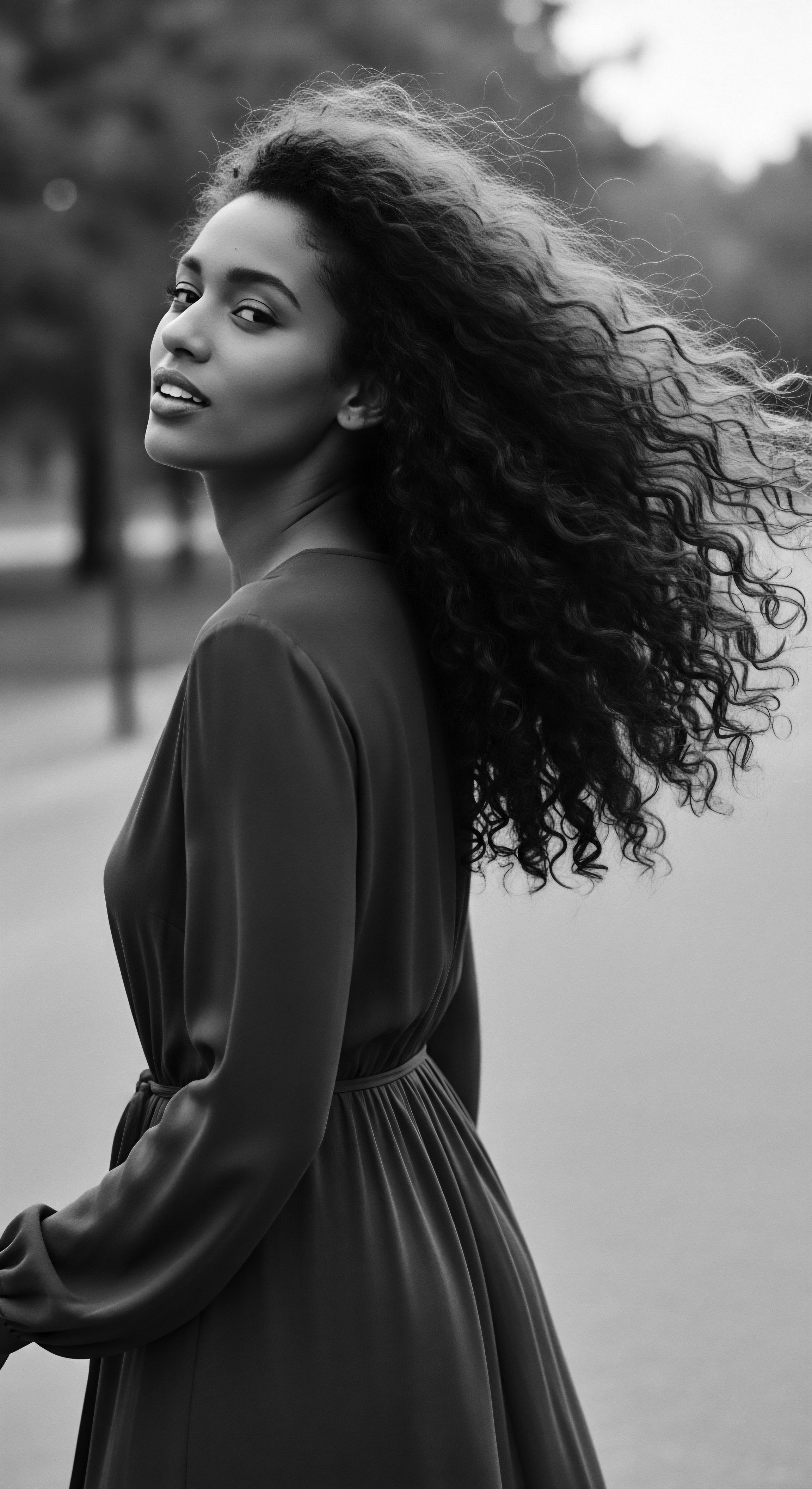
Intermediate
Moving beyond the elemental, an intermediate appreciation of Environmental Hair demands acknowledging the profound influence of the human-made environment. This includes the social, cultural, and historical landscapes that have shaped how textured hair is perceived, cared for, and worn. For Black and mixed-race individuals, this dimension is particularly poignant, as their hair has historically been a nexus of identity, resistance, and often, oppression. The very sense of hair, its cultural connotation, has been sculpted by forces far beyond the natural world.
The transatlantic slave trade, a period of unparalleled human upheaval, forcibly displaced millions from African homelands, severing cultural ties and disrupting traditional hair care practices (Érudit, 2023). In this brutal new environment, enslaved Africans found their hair, a symbol of status, lineage, and spiritual connection in their ancestral lands, subjected to profound denigration. Slave owners often shaved the heads of newly enslaved people, a deliberate act designed to strip away identity and sever connections to heritage (BLAM UK CIC, 2022). This period marked a fundamental shift in the environmental conditions surrounding Black hair, transforming it from a source of pride and communal expression into a site of struggle and forced assimilation.
The historical environment of racial subjugation deeply altered perceptions and practices surrounding Black and mixed-race hair, transforming it into a site of profound cultural and personal negotiation.
Even in the face of such adversity, ingenuity and resilience flourished. Hair, in its forced covering or deliberate manipulation, became a clandestine canvas for resistance. This era saw the emergence of practices rooted in ancestral wisdom, subtly adapted to new realities. For instance, some African women, particularly rice farmers, braided rice seeds into their hair before being transported, securing a vital food source and a symbolic link to their homeland (BLAM UK CIC, 2022).
Cornrows, a style deeply rooted in West African heritage, were purportedly used to create maps to escape plantations, serving as visual guides to freedom (BLAM UK CIC, 2022). These actions powerfully illustrate how hair became an active participant in survival against a hostile, human-imposed environment, a testament to the enduring spirit of communities. The very meaning of hair, therefore, extended into acts of defiance.
As societies evolved, so too did the pressures exerted on textured hair. Eurocentric beauty standards, which privileged straight, smooth hair, became a pervasive environmental force, influencing perceptions of professionalism and acceptability (C+R Research, 2024). This societal climate led to the widespread use of chemical relaxers and heat-styling tools, initially developed in the early 20th century, to alter the natural curl pattern (Refinery29, 2021). The perceived simplicity of maintaining straightened hair compared to natural textures became a societal narrative, often overshadowing the health implications for both hair and scalp.
| Historical/Cultural Context Pre-colonial African Societies (e.g. West Africa) |
| Hair's Environmental Response Hair as marker of identity, status, spirituality, adapting to climate. |
| Associated Care Practices/Challenges Ancestral oils (e.g. shea butter for sun protection), intricate braiding for communal identity and hygiene. |
| Historical/Cultural Context Transatlantic Slave Trade Era |
| Hair's Environmental Response Forced adaptation; hair as a symbol of resistance and survival. |
| Associated Care Practices/Challenges Clandestine braiding for sustenance (rice seeds) and escape routes (maps in cornrows). |
| Historical/Cultural Context Post-Emancipation to Mid-20th Century |
| Hair's Environmental Response Societal pressure for conformity to Eurocentric beauty ideals. |
| Associated Care Practices/Challenges Widespread use of chemical relaxers and hot combs to straighten hair, often leading to damage. |
| Historical/Cultural Context Modern Natural Hair Movement |
| Hair's Environmental Response Reclamation of natural texture, re-evaluation of "beauty." |
| Associated Care Practices/Challenges Emphasis on moisture, protective styles, natural ingredients, and challenging discriminatory practices (e.g. CROWN Act). |
| Historical/Cultural Context Understanding these historical and ongoing environmental influences reveals the profound cultural and personal resilience inherent in textured hair journeys. |
The resilience of textured hair, therefore, cannot be separated from the historical and ongoing societal environment in which it exists. The natural hair movement, gaining momentum in recent decades, signifies a collective reclaiming of autonomy and a rejection of imposed beauty standards (African Hair Summit Festival, 2024). It is an act of self-acceptance and cultural pride, celebrating the diverse textures that are a legacy of ancestral heritage. This shift also brings with it a renewed focus on natural ingredients and practices that honor hair’s innate structure, often echoing the wisdom of generations past.
- Cultural Imprint ❉ How societal values and beauty standards, particularly Eurocentric ones, have historically shaped perceptions of textured hair.
- Historical Adaptation ❉ The ways communities adapted hair care practices in response to displacement and oppression, using hair as a tool for survival and identity preservation.
- Resistance Narratives ❉ Hair’s role in counter-hegemonic movements, symbolizing defiance against discriminatory norms and a celebration of ancestral roots.
- Product Evolution ❉ The historical development of hair products, from homemade concoctions to chemical relaxers, reflecting environmental pressures and evolving beauty ideals.
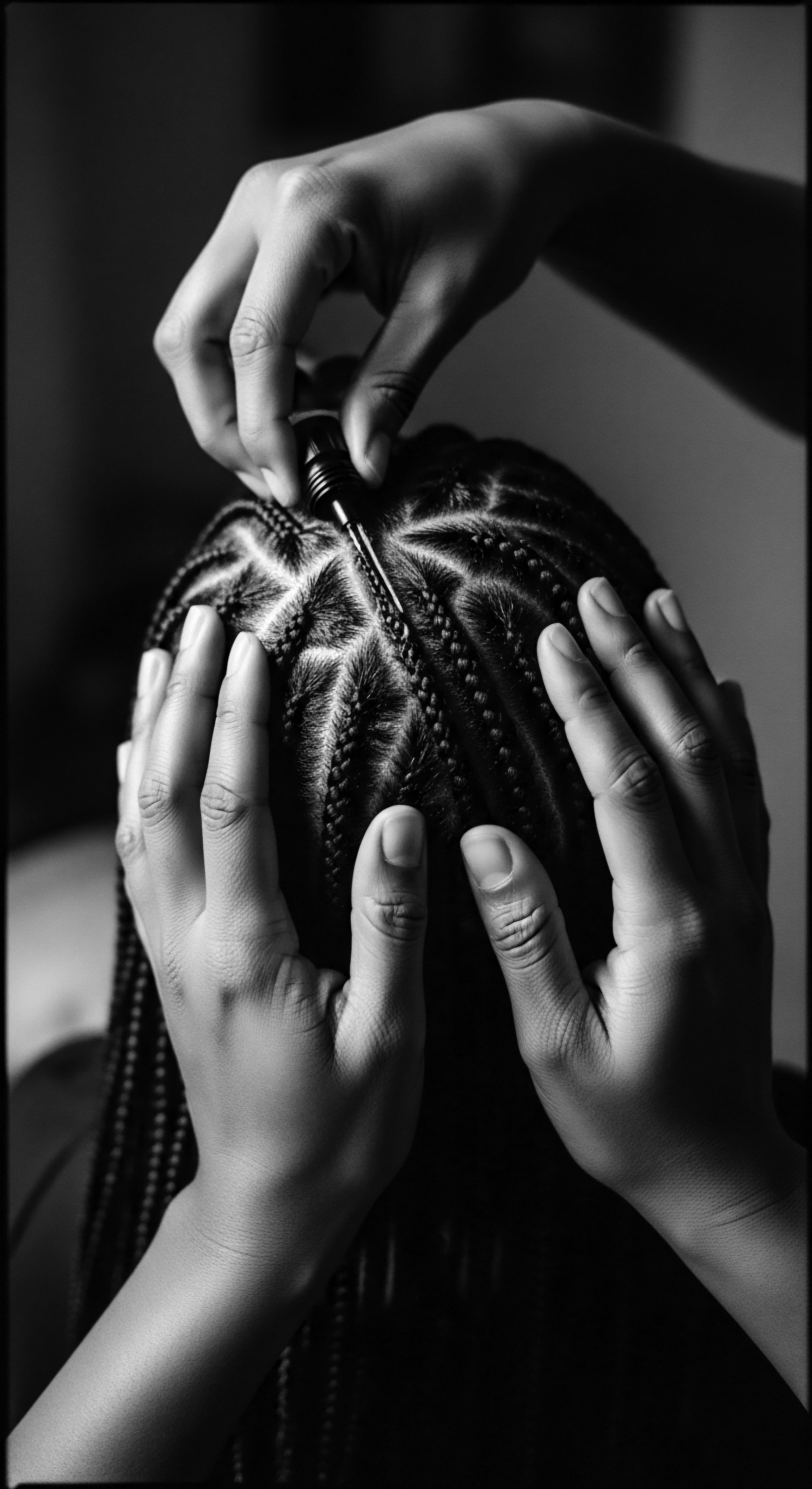
Academic
The academic designation of Environmental Hair extends to a rigorous, interdisciplinary examination of the intricate, multi-layered influences that shape hair, particularly afro-textured hair, from the deep past to contemporary societal discourse. It encompasses not only the biophysical adaptations to natural surroundings but also the profound, often invisible, environmental pressures imposed by historical, social, and economic structures. This comprehensive understanding dissects how these converging forces determine hair’s physiological characteristics, dictate its care modalities, and imbue it with significant cultural and political meaning. The explication of Environmental Hair, then, requires an analytical lens that bridges evolutionary biology with socio-cultural anthropology, revealing a complex tapestry of adaptation, resilience, and identity.
From an evolutionary standpoint, the development of afro-textured hair is a remarkable example of biophysical adaptation to specific climatic conditions. Researchers postulate that the tight, spiral-shaped curls, characteristic of this hair type, emerged among early human ancestors in Africa as a protective mechanism against intense ultraviolet (UV) radiation from the sun (EBSCO Research Starters, 2024). The dense coil pattern creates an insulating layer, trapping air and reducing heat absorption on the scalp, while simultaneously allowing for better airflow near the scalp surface for cooling. This structural property provides a natural shield, guarding against the deleterious effects of solar exposure on the scalp and brain (EBSCO Research Starters, 2024).
Further, the unique elliptical cross-section and asymmetry of the hair follicle contribute to the inherent strength and volume of afro-textured hair, despite its perceived fragility due to its coiled nature. These intrinsic properties are direct echoes of an ancient environmental pact, showcasing how biological form aligned with planetary conditions.
Environmental Hair is a holistic framework acknowledging hair’s biological adaptations to natural climates and its complex responses to socio-historical pressures, particularly for textured hair.
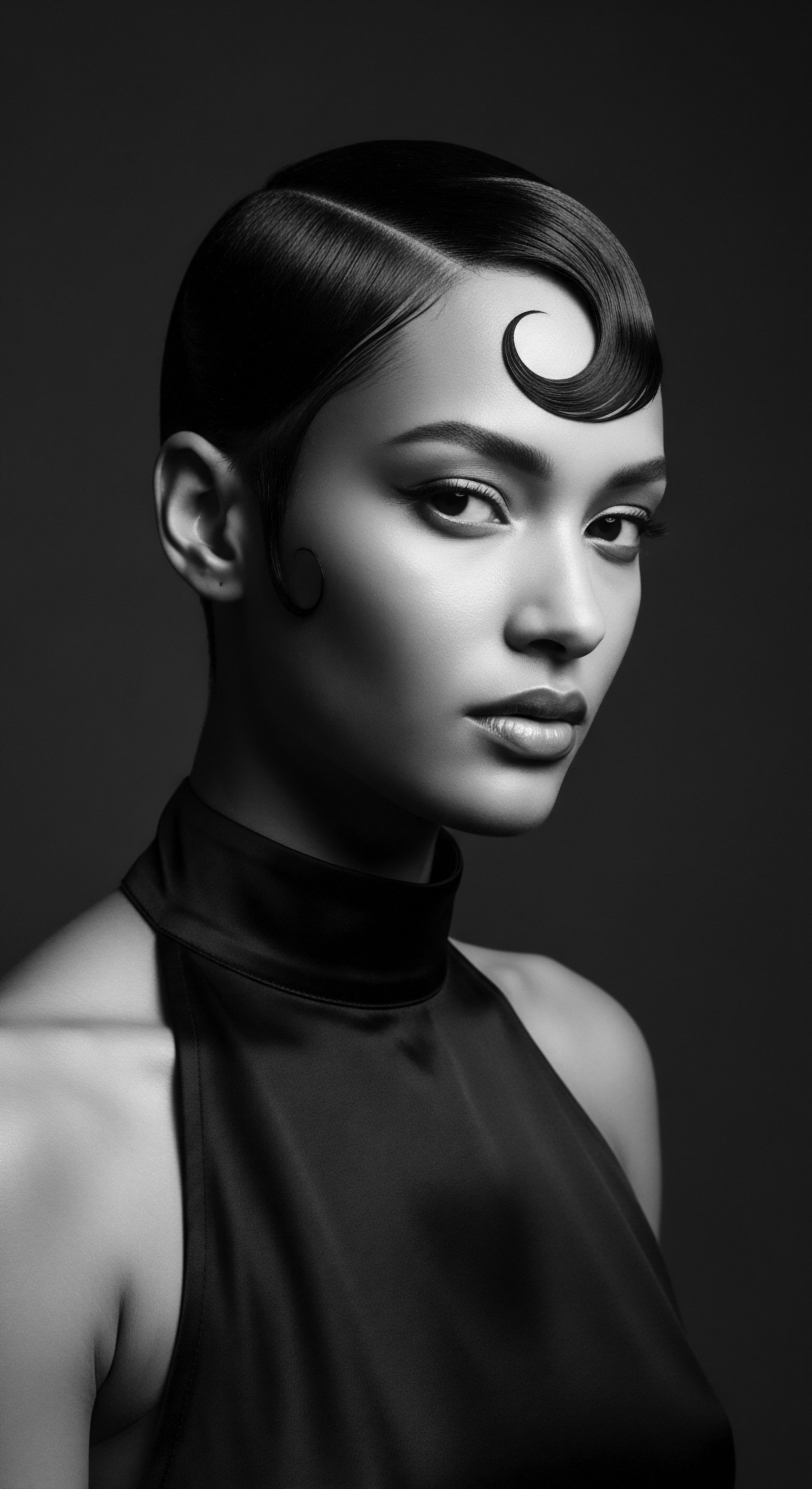
Sociocultural Environments and Hair’s Resistance
The most compelling and often overlooked aspect of Environmental Hair lies in its interaction with human-constructed social environments. The forced migration during the transatlantic slave trade subjected African people and their hair to an unprecedented environmental shift. Beyond the physical hardships of the journey, the deliberate assault on their identity—including the ritualistic shaving of heads upon arrival in the Americas—represented a profound act of environmental degradation aimed at dismantling cultural memory and communal ties (BLAM UK CIC, 2022). Hair, once a sacred marker of tribal affiliation, age, wealth, and spiritual connection in pre-colonial African societies, became a contested terrain (Afriklens, 2024).
Within this oppressive socio-environmental landscape, textured hair became a clandestine medium for survival and coded communication. A particularly illuminating instance, though less commonly cited, reveals the profound resourcefulness embedded within these ancestral practices ❉ during the harrowing forced voyages of the transatlantic slave trade, certain enslaved African women, particularly those with expertise in rice cultivation, ingeniously braided rice seeds into their elaborate cornrows. This act, documented through historical accounts, served as a crucial means of smuggling sustenance into the Americas, a literal lifeline woven into the very fabric of their hair, ensuring not only physical survival but also the possibility of cultivating staple crops from their homelands in a new, alien environment (BLAM UK CIC, 2022). Concurrently, cornrows, far from being mere adornments, functioned as intricate maps, providing visual guidance for escape routes from plantations for those seeking freedom (BLAM UK CIC, 2022).
This sophisticated use of hair as a repository of knowledge and a tool for liberation exemplifies the dynamic interplay between the hair’s physical form, the hostile external environment, and the human spirit’s unwavering will to resist. The hair itself was not merely styled; it was a living text, a strategic blueprint, and a vessel for enduring hope.
The persistence of Eurocentric beauty standards represents an ongoing environmental pressure, influencing psychological well-being and access to opportunity. Studies indicate that Black girls in majority-White schools experience higher rates of hair discrimination (66% compared to 45% in other environments), and 80% of Black women report feeling the need to alter their natural hair to fit into professional settings (Folklife Magazine, 2022). This illustrates how societal norms create an insidious “environmental” climate, impacting self-perception and mental health (University of Reading, 2025). The Crown Act of 2020, which prohibits discrimination based on hair texture or hairstyle, addresses this direct environmental injustice, striving to dismantle pervasive biases embedded within institutional structures (PMC, 2022).
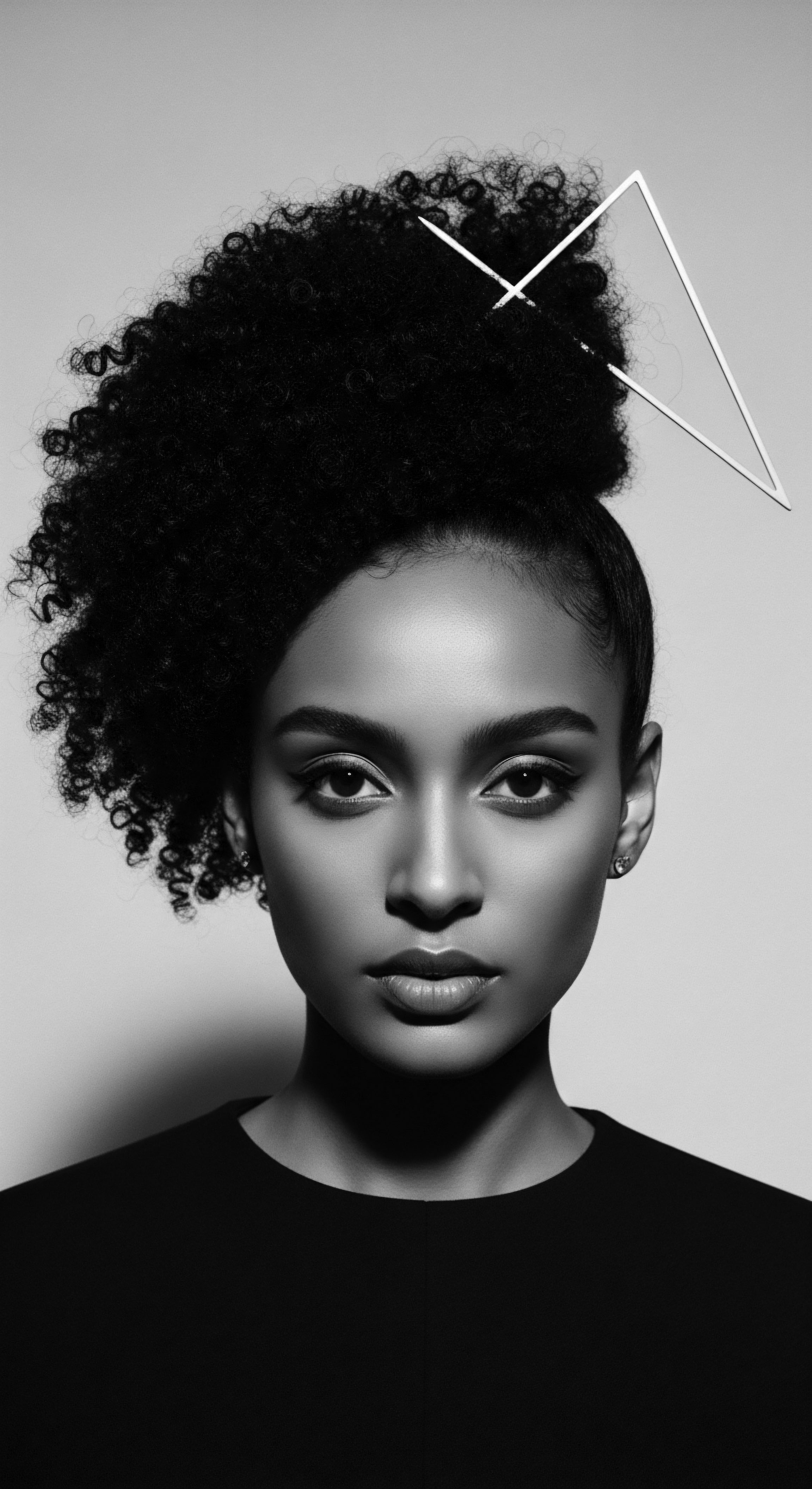
Chemical Environments and Eco-Justice
A deeper examination of Environmental Hair necessitates a critical look at the chemical environment. The historical reliance on chemical relaxers to conform to dominant beauty ideals introduced a new layer of environmental interaction, one with significant health implications. These products, often containing harsh chemicals like lye, can cause structural damage to hair, leading to breakage, porosity, and scalp issues (ResearchGate, 2015).
Beyond individual health, the production and disposal of synthetic hair, frequently used in protective styles, pose environmental challenges. Synthetic hair, often made from plastics, acrylic, or PVC, is energy-intensive to produce and takes hundreds of years to degrade in landfills (ACS ES&T Water, 2025).
The intersection of hair care products and environmental justice is particularly salient. Black communities, disproportionately affected by environmental hazards, also face heightened exposure to potentially harmful chemicals in personal care products. The concept of “environmental injustice of beauty” links systemic oppression to unequal chemical exposures and adverse health outcomes, with hair straighteners being a prime example (PMC, 2022). This understanding reveals how the environmental burden extends from the air we breathe to the products we apply to our bodies, with textured hair care often at the epicenter of this challenge.
| Environmental Category Climatic Factors (e.g. UV radiation, humidity) |
| Impact on Textured Hair Influences hair's natural coil pattern, moisture retention, and potential for damage. |
| Heritage/Cultural Connection Evolutionary adaptation of coils for protection and insulation; ancestral care practices for moisture retention (e.g. shea butter). |
| Environmental Category Societal Standards (e.g. Eurocentric beauty ideals) |
| Impact on Textured Hair Pressures to alter natural texture for conformity; impacts self-esteem and professional opportunities. |
| Heritage/Cultural Connection Historical legacy of oppression shaping beauty norms; hair as a symbol of resistance and identity in reclamation movements. |
| Environmental Category Chemical Exposures (e.g. relaxers, pollutants) |
| Impact on Textured Hair Structural damage to hair, scalp irritation; environmental burden of product manufacturing/disposal. |
| Heritage/Cultural Connection Chemical treatments as a response to societal pressure; advocacy for eco-friendly alternatives rooted in traditional natural care. |
| Environmental Category The dynamic interplay of these environmental categories profoundly shapes the journey and experience of textured hair across generations. |
The ongoing natural hair movement, therefore, is not merely a stylistic preference; it is a movement for environmental justice and cultural autonomy. By re-engaging with natural textures and seeking out formulations that are free from harsh chemicals, individuals are not only prioritizing personal health but also contributing to broader environmental sustainability (African Hair Summit Festival, 2024). This renewed focus on ethical sourcing and eco-conscious products for textured hair represents a modern iteration of ancestral wisdom, acknowledging that true hair wellness extends to the well-being of the planet itself. The definition of Environmental Hair, then, becomes a dynamic concept, continuously shaped by biological imperative, historical context, and an evolving consciousness towards collective health and heritage.
- Evolutionary Imperative ❉ How textured hair, with its unique structure, served as an ancient biological adaptation to specific environmental stressors like intense UV radiation.
- Environmental Racism ❉ The disproportionate impact of harmful chemicals in beauty products and societal pressures on the health and cultural acceptance of Black hair.
- Diasporic Resistance ❉ The powerful historical instances, such as the use of cornrows for escape maps or carrying seeds during the transatlantic slave trade, demonstrating hair as a strategic tool against environmental oppression.
- Sustainable Futures ❉ The modern push towards natural ingredients and eco-conscious hair care, re-aligning with ancestral practices and promoting environmental equity for textured hair.
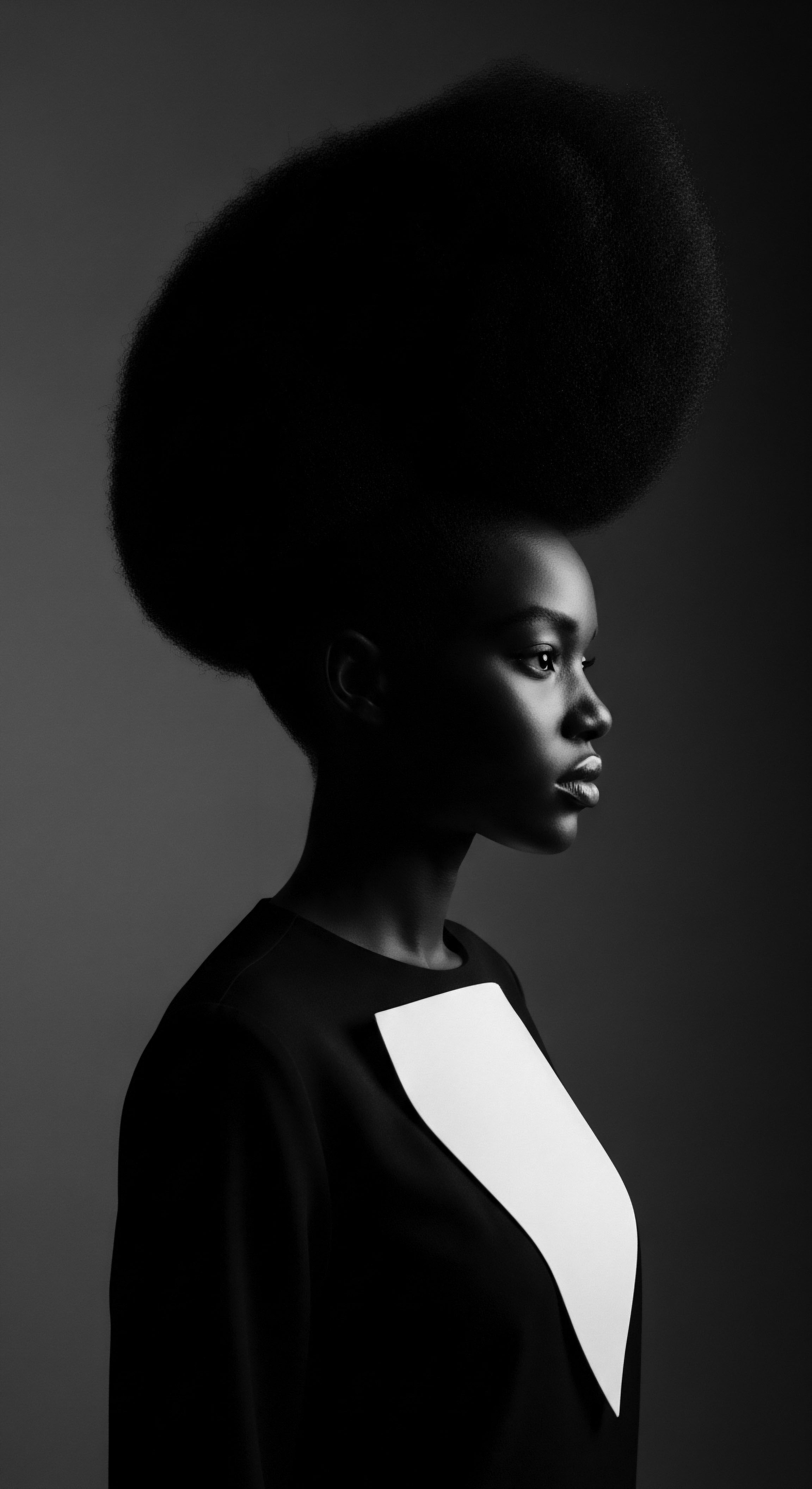
Reflection on the Heritage of Environmental Hair
Our contemplation of Environmental Hair ultimately brings us to a profound understanding ❉ hair is a living archive, intricately woven into the very fabric of existence. It carries the ancestral blueprint of adaptation to solar intensity and climatic variations, a testament to its elemental origins. Beyond that primordial connection, it bears the indelible marks of human history, particularly the profound journey of Black and mixed-race communities. The meaning of hair, therefore, deepens with each passing era, reflecting the complex interplay between the natural world and the human spirit.
The journey of textured hair through eras of displacement, subjugation, and reclamation illuminates its enduring significance as a symbol of identity and resilience. From the ancient practices of scalp care using shea butter and intricate braiding that conveyed social status, to the ingenious ways hair became a vessel for survival during the transatlantic slave trade, each strand holds a story of adaptation and defiance. This continuous narrative affirms that hair is far more than protein fibers; it is a cultural artifact, a statement of enduring heritage, and a site of persistent self-determination.
As we gaze towards the horizon, the understanding of Environmental Hair compels us to honor the wisdom of our forebears. It encourages a mindful approach to care, one that seeks harmony with both our inner selves and the wider world. This perspective invites us to recognize that the choices we make for our hair today resonate with the echoes of ancient traditions and shape the legacies we leave for future generations. The soulful essence of a strand, therefore, whispers not just of individual beauty, but of collective strength, a continuous thread of heritage stretching from the source to the boundless future.
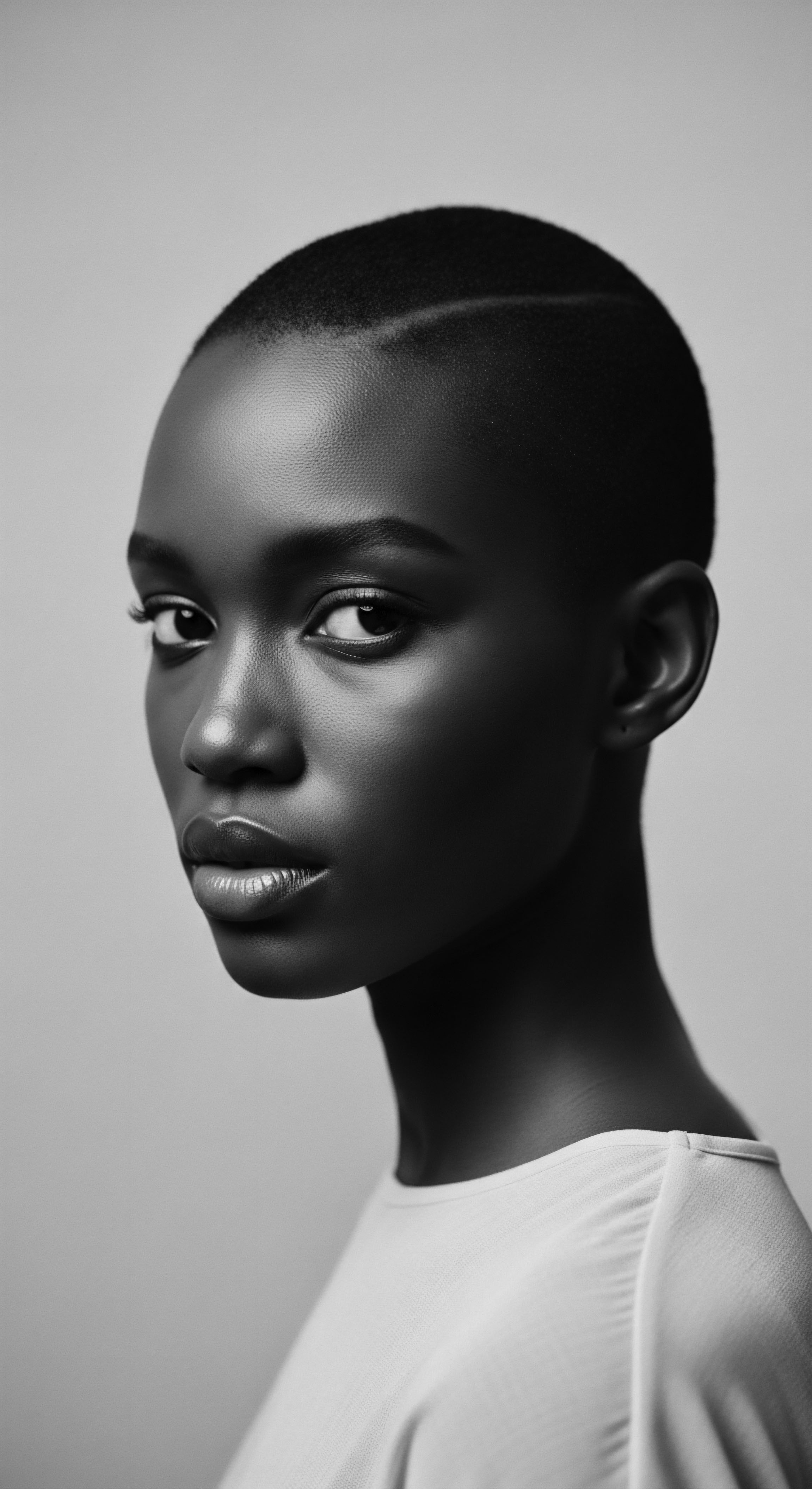
References
- Afriklens. (2024). African Hairstyles ❉ Cultural Significance and Legacy.
- ACS ES&T Water. (2025). Environmental Consequences of Synthetic Hair Use from a Black British Perspective (and some eco-friendly alternatives).
- BLAM UK CIC. (2022). The history of Black Hair.
- C+R Research. (2024). The Connection Between Hair and Identity in Black Culture.
- EBSCO Research Starters. (2024). Afro-textured hair.
- Érudit. (2023). The importance of hair in the identity of Black people.
- NYSCC. (2021). Impact of Environmental Stressors on Hair.
- PMC. (2022). The Environmental Injustice of Beauty Products ❉ Toward Clean and Equitable Beauty.
- Refinery29. (2021). The Evolution Of The Natural Hair Movement.
- ResearchGate. (2015). Clinical and anthropological perspectives on chemical relaxing of afro-textured hair.
- African Hair Summit Festival. (2024). Why Embrace Your Natural Hair? Benefits Beyond Beauty.
- Folklife Magazine. (2022). It’s More Than “Just” Hair ❉ Revitalization of Black Identity.
- Prezi. (2025). Hair Texture Variation ❉ Evolutionary and Environmental Influences.
- University of Reading. (2025). Beyond the roots ❉ exploring the link between black hair and mental health.
